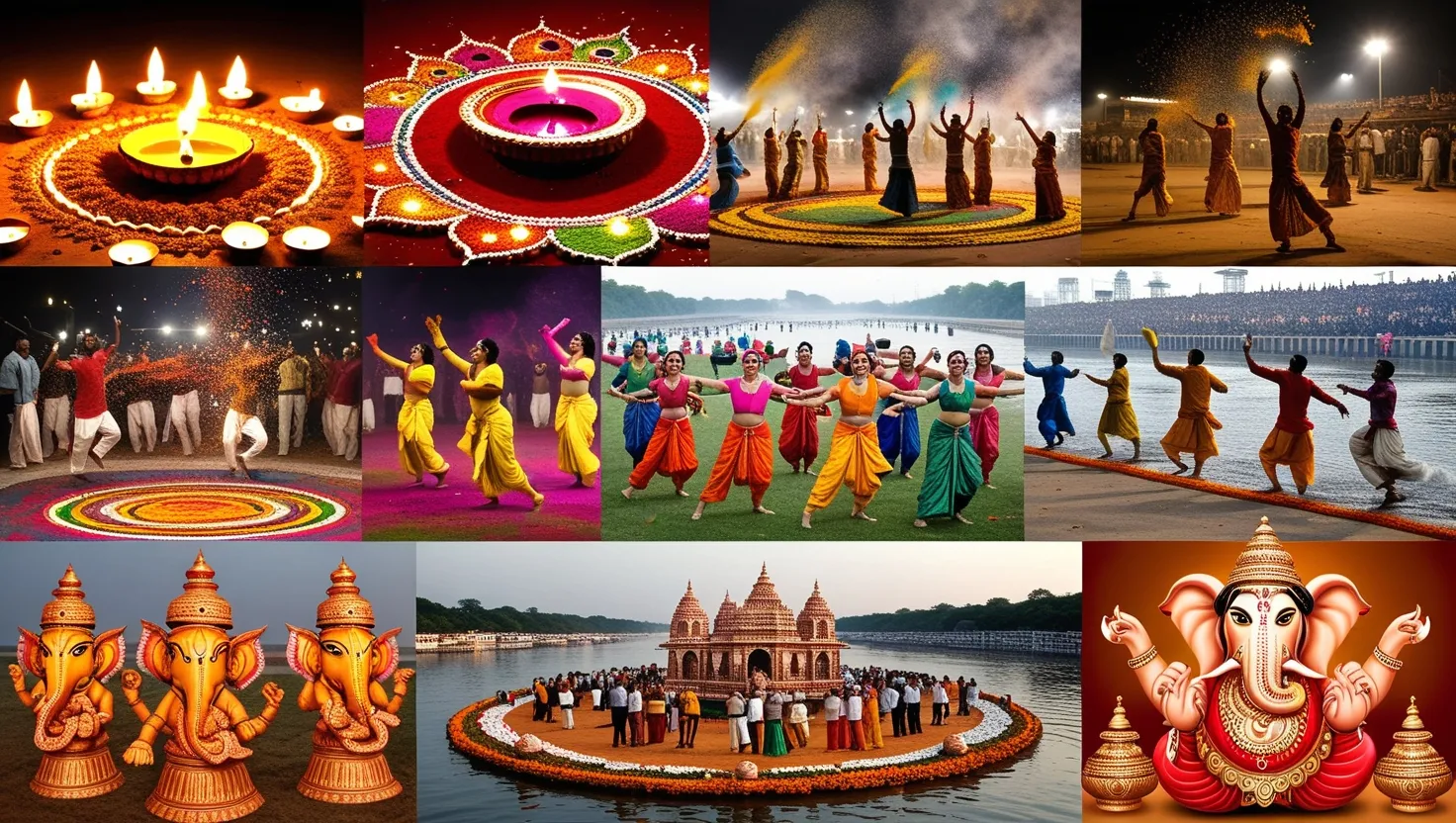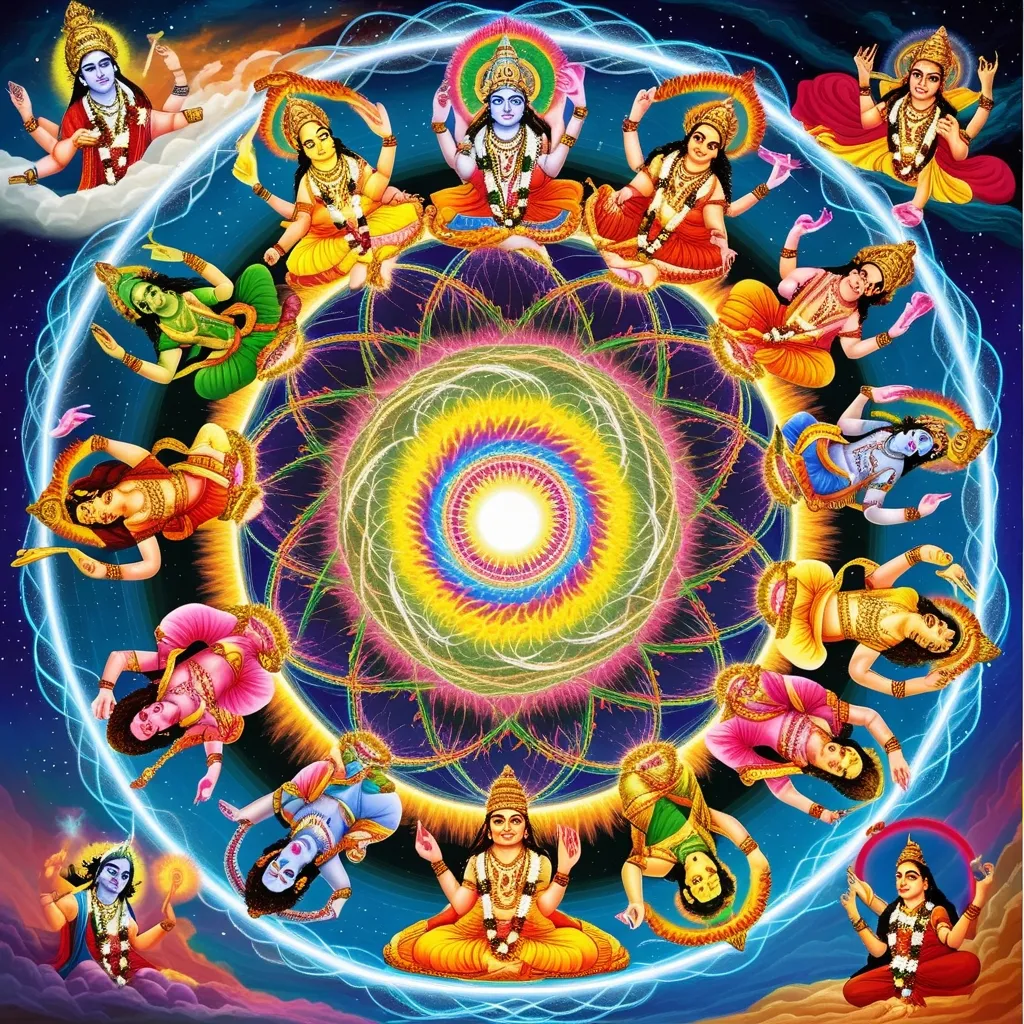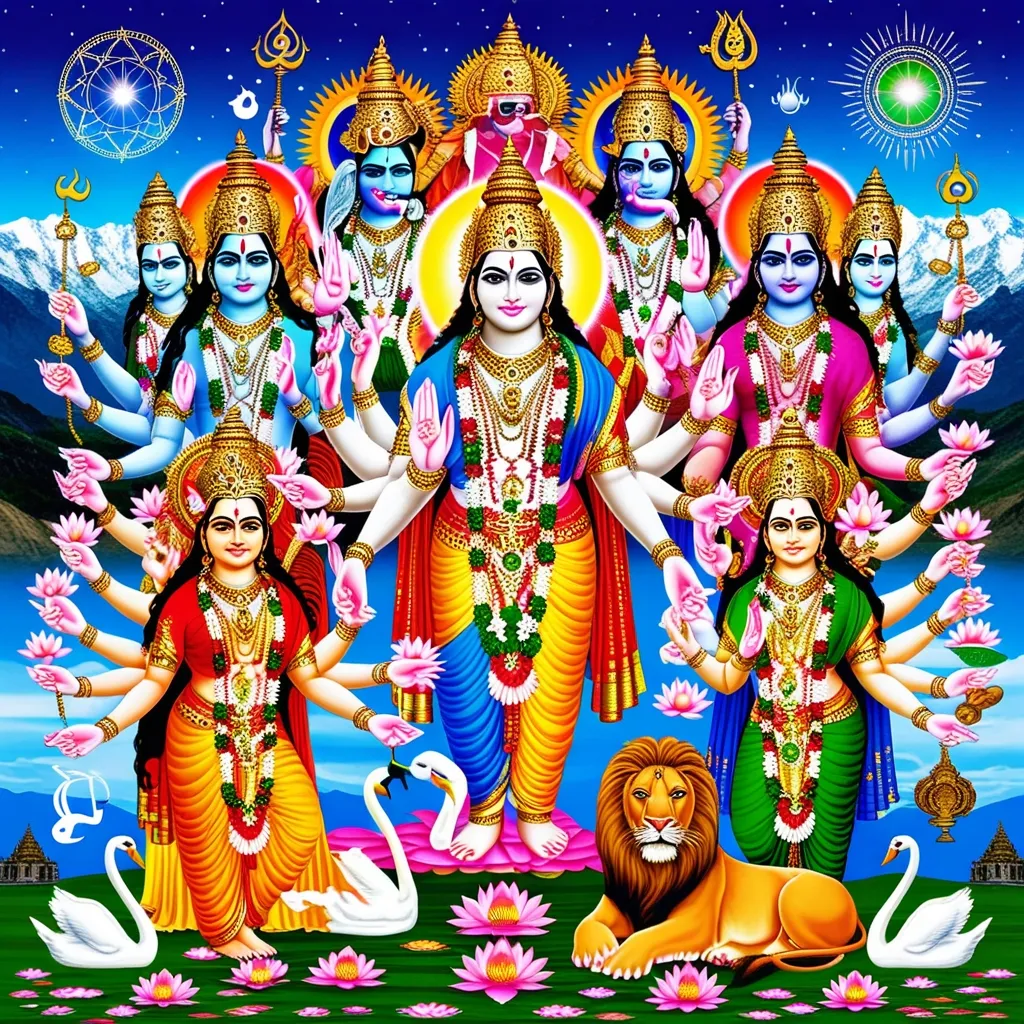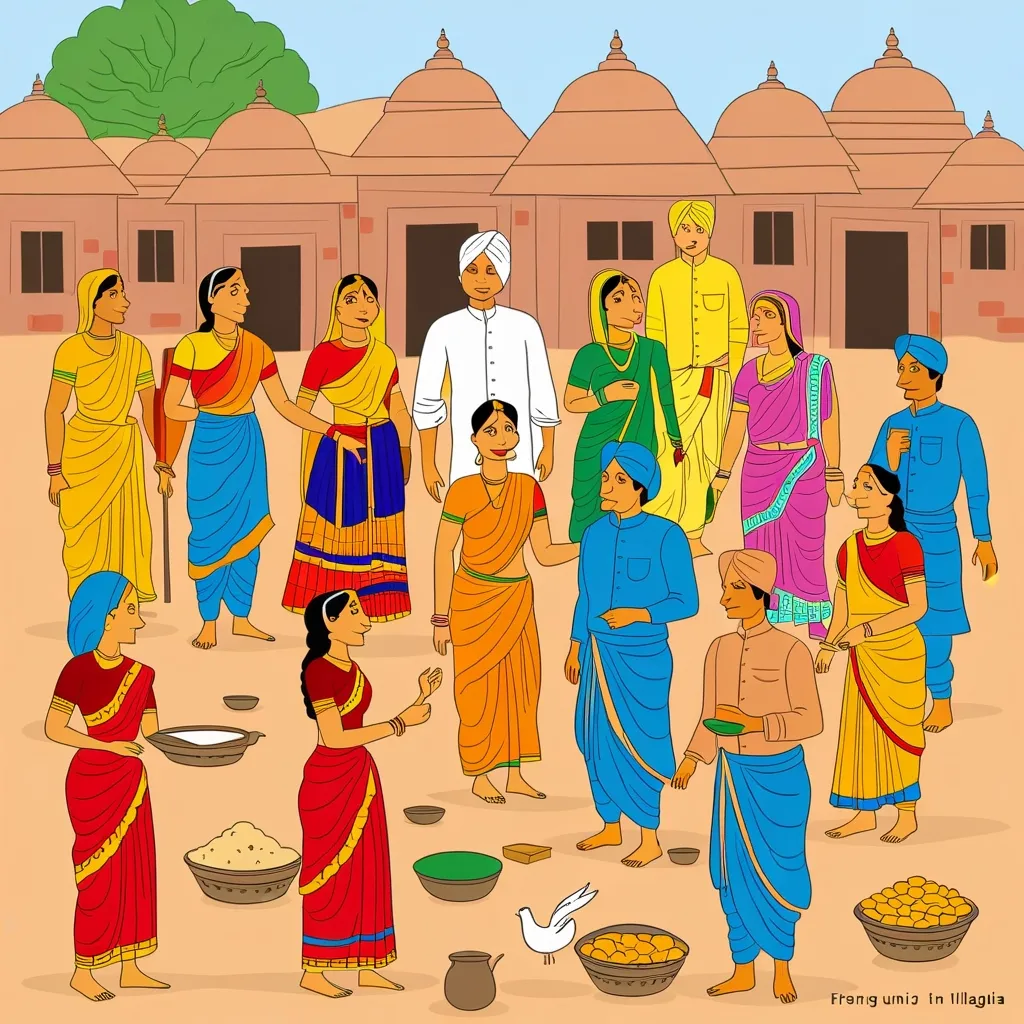5 Sacred Hindu Festivals That Transform Communities and Hearts
The rich tapestry of Hindu festivals continues to shape society and individual lives through profound spiritual and social connections. These celebrations blend ancient wisdom with contemporary relevance, creating experiences that transcend mere ritual to become transformative forces in communities across India and beyond.
I’ve often witnessed how these festivals create spaces where spiritual devotion and community bonding merge seamlessly. The vibrant colors, melodious chants, and shared meals become vehicles for something much deeper – a collective experience that reshapes how we relate to each other and ourselves.
“A festival is not a mere gathering of people or a collection of rituals. It is the living breath of culture itself, keeping traditions alive while allowing them to evolve with the changing times.” - Rabindranath Tagore
Hindu festivals maintain remarkable relevance in modern society precisely because they adapt while preserving their spiritual essence. They provide structured opportunities for connection in an increasingly disconnected world. Have you noticed how even strangers speak to each other during these celebrations with unusual warmth?
The festival of Diwali illuminates homes and hearts through countless oil lamps that symbolize the victory of light over darkness. This five-day celebration commemorates Lord Rama’s triumphant return to Ayodhya after defeating the demon king Ravana[1]. Families meticulously clean their homes, prepare sweets, and create intricate rangoli patterns at entrances. The festival transforms entire neighborhoods as homes glow with lights, creating a collective visual spectacle that reminds participants about their inner light of wisdom.
What makes Diwali particularly powerful is how it combines spiritual practice with community engagement. Prayers for prosperity are followed by gift exchanges and shared meals. Business ledgers begin anew, relationships are refreshed, and even estranged family members often reconcile during this period. The economic impact extends beyond household celebrations to support local artisans, sweet makers, and merchants who prepare year-round for this peak selling season[4].
“The lights of Diwali remind us that from darkness comes knowledge, from untruth comes truth, and from death comes life.” - Ancient Hindu proverb
The festival of Holi disrupts everyday social patterns through its joyful celebration of divine love and seasonal renewal. Commemorating Lord Krishna’s playful nature while marking spring’s arrival, Holi temporarily dissolves social boundaries as people from different backgrounds share colored powders in playful exchanges[3]. This brief suspension of hierarchies reflects deeper philosophical principles about unity beneath apparent differences.
Have you ever experienced how a festival can completely transform the mood of an entire community? Holi accomplishes this through coordinated celebration that shifts collective energy from winter’s restraint to spring’s release. Traditional bonfires on Holika Dahan symbolize the burning of negative energies, while the next day’s color play represents renewed vigor and joy.
Navaratri honors the divine feminine through nine nights of worship dedicated to various manifestations of the goddess. Different regions celebrate distinct aspects – from Durga’s warrior strength to Lakshmi’s nurturing abundance. The festival combines disciplined fasting with energetic community dancing, particularly in Gujarat where the Garba dance draws participants of all ages into concentric circles that mirror cosmic rhythms[5].
The social impact of Navaratri extends beyond religious observance to strengthen community bonds. Extended families gather to share meals after evening worship. Young people learn traditional dances and songs from elders. The celebration provides structured opportunities for cultural transmission while adapting to contemporary contexts. In urban settings, large community Garba events have become popular social gatherings that maintain cultural practices among younger generations.
“In worshipping the goddess, we recognize the divine feminine energy that flows through all creation, nurturing and protecting life itself.” - Swami Vivekananda
The Kumbh Mela represents perhaps the most impressive demonstration of collective faith in action. This massive gathering rotates between four sacred cities every twelve years, drawing millions of pilgrims who converge to bathe in holy rivers during astrologically significant times[4]. The festival creates temporary megacities with elaborate infrastructure, showcasing remarkable organizational capabilities mobilized through shared spiritual purpose.
What’s particularly fascinating about Kumbh Mela is its dual nature as both ancient tradition and modern logistical achievement. Temporary roads, bridges, medical facilities, and sanitation systems accommodate millions of visitors in a coordinated effort involving government agencies, religious organizations, and countless volunteers. The festival demonstrates how spiritual motivation can drive practical cooperation on an extraordinary scale.
For participants, the pilgrimage offers both personal transformation and community connection. Sadhus (holy men) from isolated ashrams gather to share teachings. Families traveling long distances bond through shared hardship and devotion. The collective energy of millions united in spiritual purpose creates a palpable atmosphere that many describe as life-changing.
Ganesh Chaturthi demonstrates how religious celebration fuels community cooperation and increasingly, environmental awareness. The festival involves crafting clay statues of Lord Ganesha, celebrating for several days, then immersing them in water bodies[4]. This cycle of creation and dissolution mirrors cosmic principles while bringing neighborhoods together through shared effort.
In recent years, I’ve observed how this festival has evolved to address environmental concerns without losing its spiritual significance. Many communities now use eco-friendly materials for Ganesh statues and create artificial immersion tanks to prevent water pollution. This adaptation shows how traditional practices can remain relevant by responding to contemporary issues while preserving essential spiritual elements.
“The making and immersion of Ganesh idols teaches us the profound truth that all forms eventually return to formlessness, reminding us to remain unattached even as we celebrate creation.” - Sri Sri Ravi Shankar
The vibrant preparations for Ganesh Chaturthi build community cohesion as neighbors collaborate on pandals (temporary shrines) and cultural programs. Young people gain organizational skills while learning traditional arts. The 10-day celebration creates spaces for both devotional practices and social gathering, demonstrating how religious observance strengthens community bonds.
Do you find that participating in these festivals connects you more deeply to your cultural heritage? For many people living away from their ancestral homes, these celebrations provide essential continuity with traditional identities while creating new communities in diaspora settings.
The economic impact of Hindu festivals extends far beyond religious observance. These celebrations generate significant economic activity, providing income for artisans, food vendors, flower sellers, and performers[5]. Temporary employment opportunities help marginalized communities access economic benefits while preserving traditional crafts and performance arts[5]. The festival economy creates diverse pathways for participation in cultural heritage.
Hindu festivals also serve as powerful vehicles for social integration across economic and cultural differences[4]. Celebrations often include charitable activities that redistribute resources within communities. Shared meals, public performances, and collective rituals create spaces where people from different backgrounds interact as equals. This inclusive aspect helps strengthen social cohesion in increasingly diverse settings.
The transmission of cultural knowledge remains perhaps the most significant social function of these festivals. Families celebrate together, ensuring rituals and stories pass from elders to younger generations[4]. Children learn not just through formal instruction but through participation in preparation activities, performances, and shared meals. This experiential learning embeds cultural values deeply within personal identity.
“Festivals are the meeting point where the human and the divine dance together, where heaven and earth touch, if only briefly.” - Ananda Coomaraswamy
What’s particularly remarkable about Hindu festivals is their continued relevance despite rapid social change. By adapting traditional practices to contemporary contexts while preserving essential spiritual elements, these celebrations remain vital cultural institutions. They offer structured opportunities for community bonding and personal renewal that address fundamental human needs for belonging and meaning.
The transformative power of these festivals operates on multiple levels simultaneously. Individual participants experience spiritual renewal through ritual practices. Families strengthen bonds through shared activities and meals. Communities build cohesion through collective organization and celebration. The interweaving of these personal, familial, and social dimensions creates experiences that remain meaningful in modern contexts.
How might we apply the community-building aspects of festivals to other areas of contemporary life? The collaborative spirit and shared purpose evident during these celebrations offer models for addressing broader social challenges. The temporary dissolution of hierarchies during festivals like Holi suggests possibilities for more inclusive social interactions beyond festival contexts.
Hindu festivals demonstrate how spiritual practice can integrate seamlessly with social celebration and economic activity. Rather than separating these dimensions of human experience, these celebrations weave them together into cohesive cultural events. This integration offers an alternative to the compartmentalization often experienced in modern life.
As society continues evolving, these festivals will undoubtedly adapt while preserving their essential functions. New technologies already facilitate participation for diaspora communities through virtual celebrations. Environmental concerns inspire eco-friendly adaptations of traditional practices. These changes reflect the living nature of cultural heritage rather than diminishing its authenticity.
The transformative power of Hindu festivals ultimately lies in their ability to create spaces where individuals connect with something larger than themselves – whether defined as divine presence, cultural heritage, or community spirit. This connection to larger meaning systems provides both stability and renewal in times of rapid change.
“The true purpose of festivals is not merely to observe rituals but to transform the heart, not just for a day but for a lifetime.” - Swami Chinmayananda
These sacred celebrations continue to transform communities and hearts through their unique blend of spiritual devotion and social connection. They remind us that meaningful traditions don’t simply preserve the past – they actively create spaces where communities can experience renewal and transformation that remains relevant to contemporary life.






